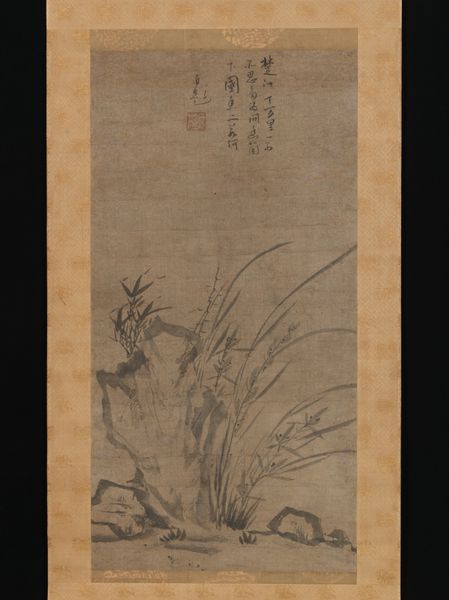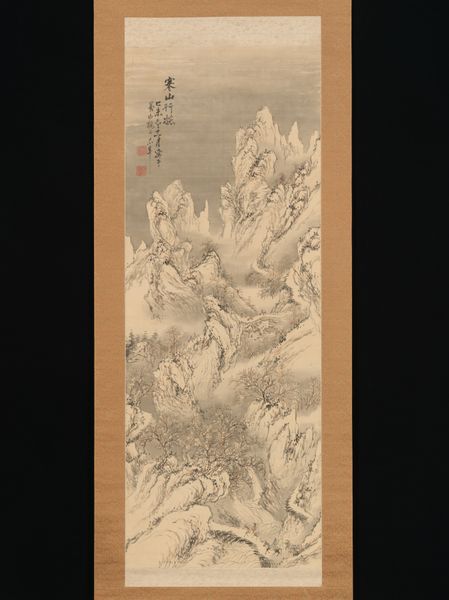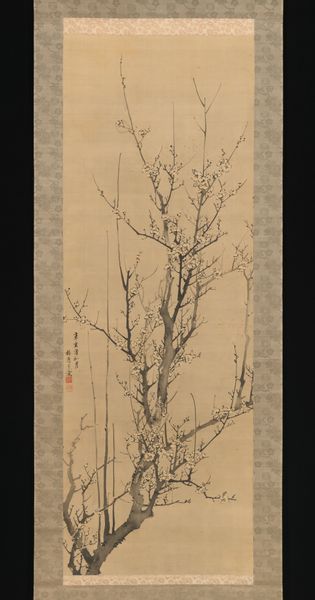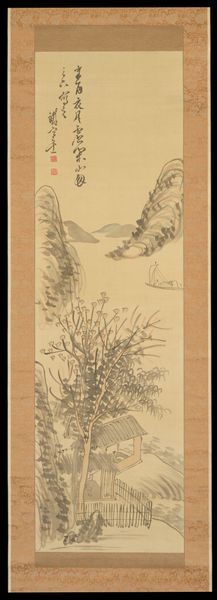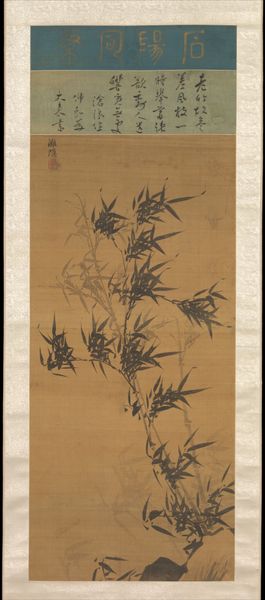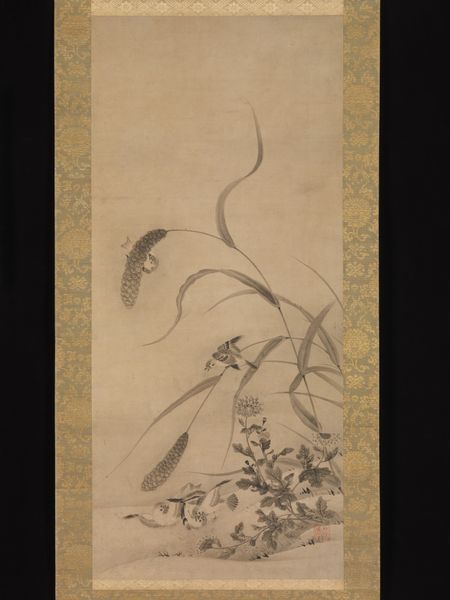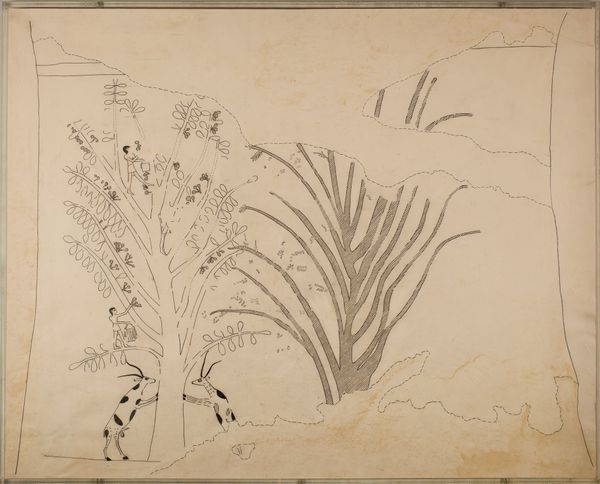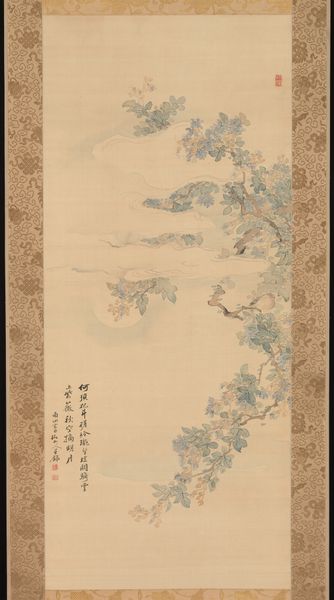
drawing, paper, ink-on-paper, hanging-scroll, ink
#
drawing
#
ink drawing
#
ink painting
#
asian-art
#
landscape
#
japan
#
paper
#
form
#
ink-on-paper
#
hanging-scroll
#
ink
#
linocut print
#
ink drawing experimentation
#
orientalism
#
abstraction
#
line
#
calligraphy
Dimensions: 0.65 x 29.53 cm) (image)
Copyright: Public Domain
Editor: Here we have "Mountain Wandering," a hanging scroll in ink on paper by Fūgai Honkō, likely from the 19th century. It feels so sparse and quiet. I’m curious, how do you interpret this work? Curator: This piece speaks volumes about the socio-political context of 19th-century Japan and Honkō’s place within it. Consider the wandering figure, dwarfed by the landscape. What do you make of the lone wanderer amidst such imposing nature? Editor: They seem really small. Vulnerable, maybe? Curator: Exactly. Now, consider the time period. The late 19th century was a period of immense upheaval in Japan, marked by the end of feudalism and rapid Westernization. Might this figure represent a sense of displacement, of searching for meaning in a rapidly changing world? The act of wandering can be a powerful metaphor, particularly for those marginalized or seeking alternatives to dominant power structures. What do you notice about the artist's use of empty space? Editor: There's a lot of it! Almost like the figure is adrift in it. Curator: Precisely. The emptiness invites contemplation, reflecting a Daoist or Zen Buddhist influence – a desire to find harmony with nature and perhaps, within oneself, even in the face of social disruption. This work also reminds us of the importance of recognizing whose stories are typically absent from art historical narratives, and considering the societal forces that might push individuals towards wandering, both literally and figuratively. What sort of conversations do you think the artist was attempting to have with society? Editor: This makes me see the painting less as just a pretty landscape and more as a commentary on the uncertainty and search for identity during a turbulent period. Curator: Indeed. It reminds us that art is never created in a vacuum, and understanding its historical context can illuminate its deeper meanings and its engagement with broader social issues. I will need to revisit Japanese works of the same era now, with a focus on identifying cultural metaphors.
Comments
minneapolisinstituteofart almost 2 years ago
⋮
During the 18th and 19th centuries some Japanese artists cultivated the lifestyle and art forms of Chinese scholar-artists (literati). Literati culture, introduced to Japan by Chinese monks, inspired the Japanese painters to emulate the Chinese scholars by immersing themselves in literature, philosophy, nature and ink painting. Fūgai Honkō, a Zen monk and artist, expresses a belief in the restorative power of nature in this ink painting. The painting invites viewers to take a spirit journey in nature with the walking scholar, from the cliff in front to a thatched hut across the shore, and the mountains beyond. The lone figure walking in the wilderness is a recurring theme in Chinese and Japanese painting. These images represent the learned gentleman's rejection of worldly affairs in favor of leading an hermitic life of self-cultivation and devotion to nature.
Join the conversation
Join millions of artists and users on Artera today and experience the ultimate creative platform.

